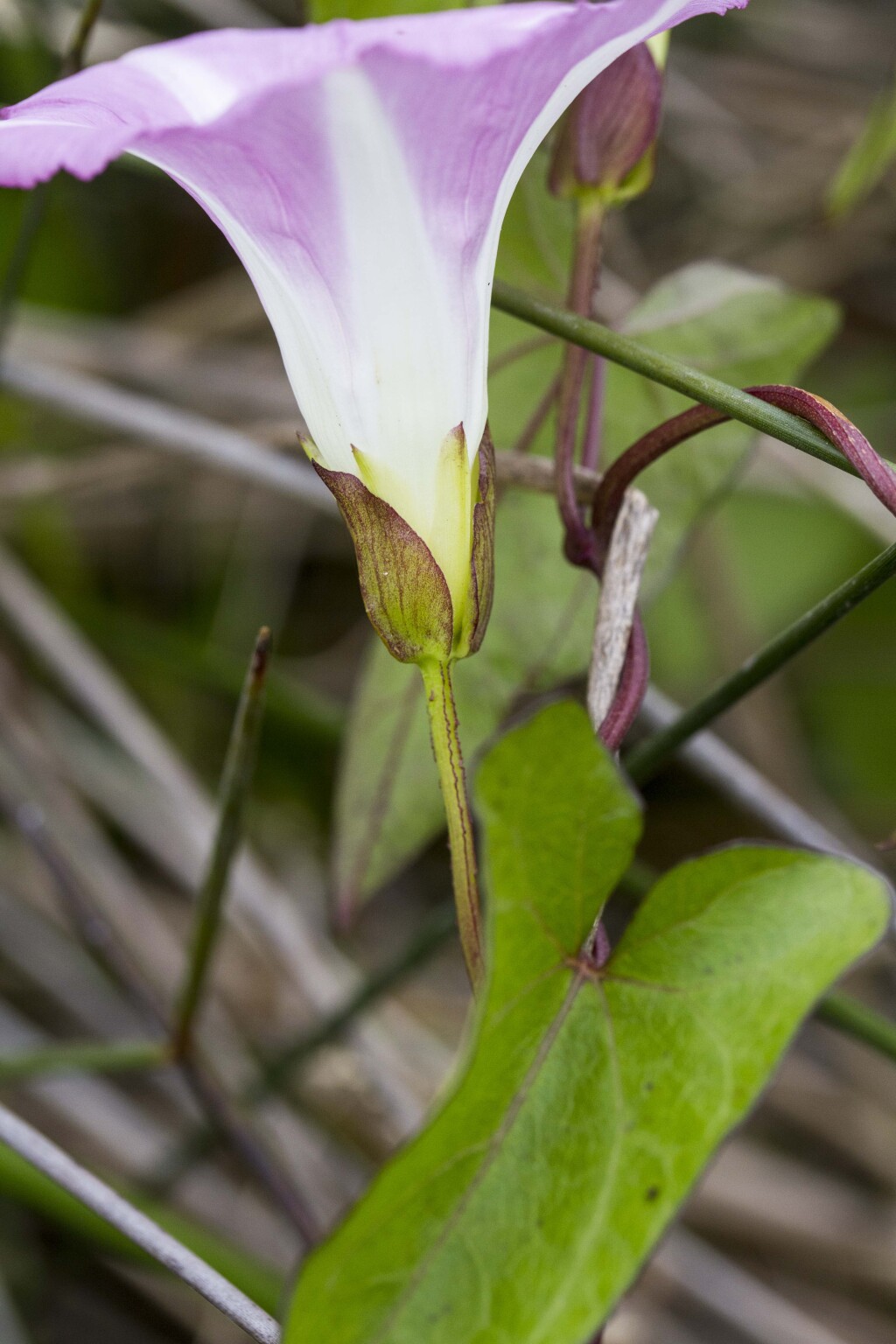Calystegia sepium subsp. roseata
BrummittGlabrous, twining perennial. Leaves ovate to lanceolate, 4–10 cm long, 2–8 cm wide, apex acuminate, base sagittate to hastate, margins undulate, basal lobes entire to shallowly lobed; petiole 1.5–5 cm long. Flowers with peduncles 3–12 cm long, much longer than petioles; bracteoles ovate, 1.5–2 cm long, apex acute, longer than and enclosing calyx, overlapping only toward base; sepals to c. 1.5 cm long; corolla 4–6 cm long, white or pinkish. Capsule ovoid to subglobose, 7–8 mm long. Flowers spring and summer.
LoM, MuM, GleP, Brid, VVP, VRiv, MuF, GipP, OtP, WaP, CVU, DunT, NIS, EGL, EGU, WPro, HSF, HNF, OtR, Strz. A widespread, robust twiner of swamps, stream margins and urban waste areas.
Some Victorian collections are somewhat intermediate between C. sepium and C. silvatica. A similar situation has been noted in New Zealand (Ogden 1978) where intermediates have been thought to be the product of hybridisation and introgression.
 Spinning
Spinning


